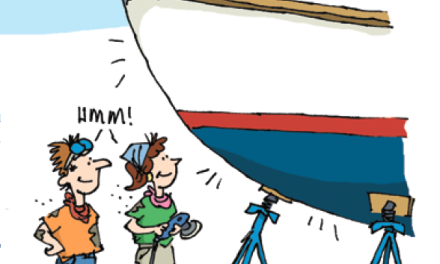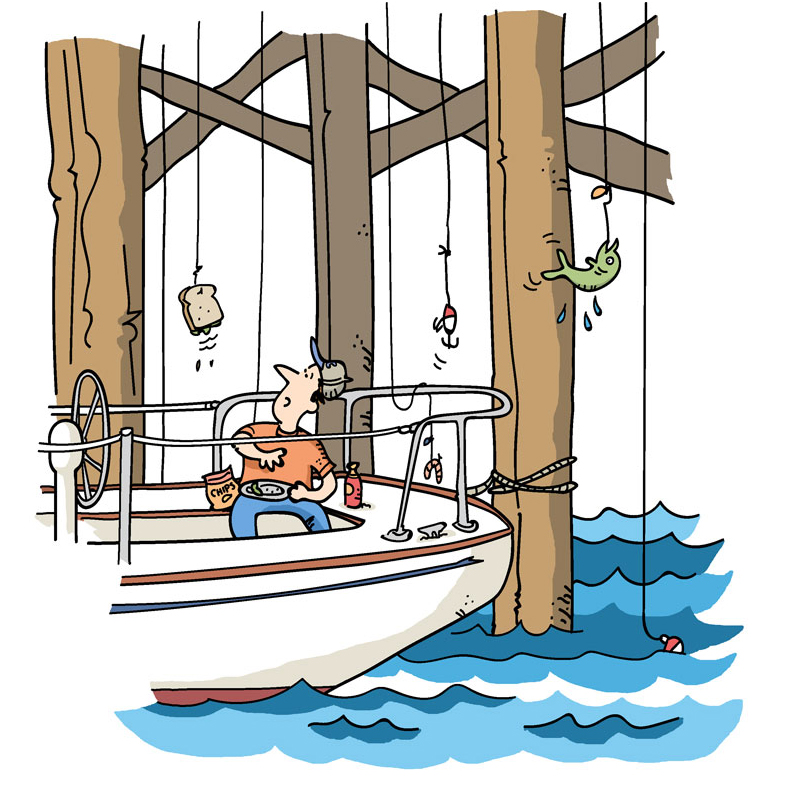
Boat projects and pastimes relieve the symptoms of winter withdrawal
For the sailors among us who live in the northern latitudes, the sailing season is woefully short — barely six months in a good year. While our neighbors are harvesting grapes, getting ready for deer camp, or planning holiday gatherings, we sailors are taking that last sail and making the final trek to the boatyard. This unfailingly coincides with the onset of a somewhat uncommon malady shared by the few venturesome souls who intentionally live around larger bodies of water.
Onset of the malady coincides with the arrival of shorter, windier, cloudier, and rainier days, and an early symptom is the “loath to pack up boat gear” feeling that’s followed by “autumn despondence.” This is often triggered by the ritual of emptying lockers of anything that will freeze: food, paint, hull polish, sodas, beer, and other sundry items that we must lug ashore and take home. To combat this despondence, I take the brass ship’s clock and barometer home, so I can listen to the clock’s soft chimes all winter long and periodically consult the barometer for signs of changes in the weather.
As I clean the boat, I run through my mental checklist for winterizing the craft for the next six months of its lonely frozen existence. The same questions come up every year: how does the process go for pumping out the holding tank, draining the water from the engine, disassembling the water pump, and removing the batteries? It seems that each year I wrestle with a new plan to keep the boat tarp from shredding in the wind. How will this winter stymie my efforts to keep the boat covered?
When stricken by the end-of-sailing-season blues, some of us find reassurance in lists. I list jobs to do between now and spring, like removing the furler drum and taking it home to rebuild in the shop, and tasks I need to accomplish once the weather warms up in the spring, such as staining and varnishing. This particular one is easy because it rolls over from one year to the next, never complete as I strive to keep my old boat in Bristol condition.
Another list is that of sailing books that “need” to be read over the winter. This list grows each season, as I’m always on the lookout for a sailing book to settle down with on a cold winter’s night when the north wind howls and the snow falls. My other winter pastime is poring over charts. I can spend fruitful hour upon fruitful hour studying the places we sailed this year and the places we want to sail next year, looking for potential new anchorages and noting what kind of bottom we expect to find.
Despite my annual plunge into the boat-cradle blues, hope is always on the horizon. The nightly display of stars in the sky will progress from winter to spring constellations. Orion will wax, then be replaced by Leo. Winter storms will come and go, the snow will eventually melt, and the chunks of ice that formed in the cockpit well will drain out the scuppers.
Before I know it, I’ll be attaching the boom to the mast, installing the new genoa sheets purchased over the winter, and connecting the freshly charged batteries to the system. The sailboat will once again float beneath the travel lift, the drive-shaft packing gland will not drip, and the engine will start on the first crank. Then we sail . . .




